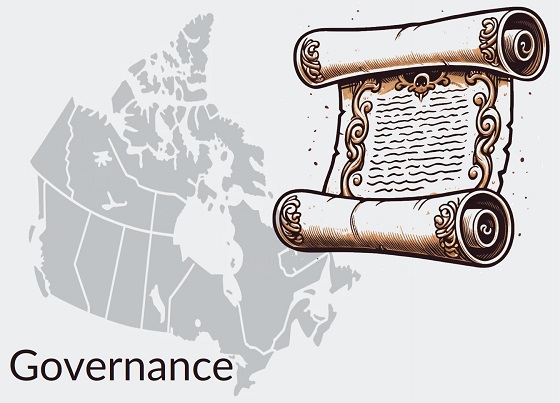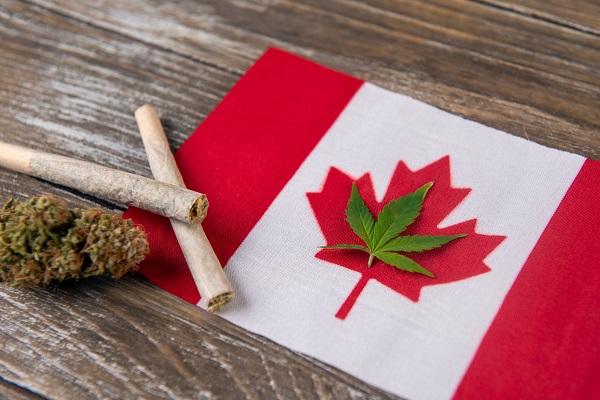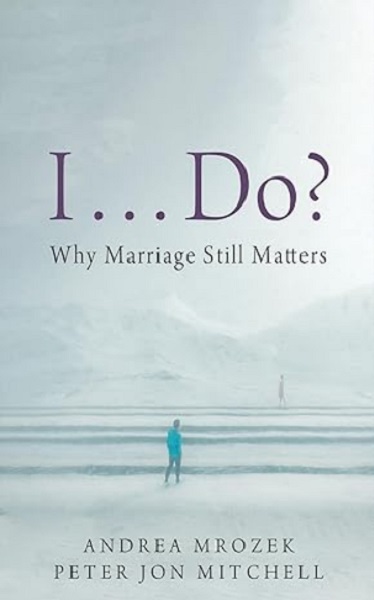David Clinton
Is Canada Abusing the Charter of Rights and Freedoms?

Canadians have no absolute right to equal treatment under the law.
Monitoring the intersection between equality and equity
Let me explain that. Section 15 of the Charter of Rights and Freedoms was, from the perspective of the Charter’s creators, an exceedingly difficult needle to thread. The tension between its two subsections carries the potential for confusion and even abuse. Here’s the text itself:
(1) Every individual is equal before and under the law and has the right to the equal protection and equal benefit of the law without discrimination and, in particular, without discrimination based on race, national or ethnic origin, colour, religion, sex, age or mental or physical disability.
(2) Section (1) does not preclude any law, program or activity that has as its object the amelioration of conditions of disadvantaged individuals or groups including those that are disadvantaged because of race, national or ethnic origin, colour, religion, sex, age or mental or physical disability.
15(1) guaranteed the equal treatment of all individuals. That’s something I can’t imagine any reasonable-minded person opposing. The problem was that, at the same time, the authors also wanted to leave room for unfair treatment for select groups through affirmative action programs. That’s the purpose of 15(2).
The Audit is a reader-supported publication. To receive new posts and support my work, consider becoming a free or paid subscriber.
If 15(2) didn’t exist, challenges to, say, hiring practices targeting historically disadvantaged racial groups could be launched based on the rights found in 15(1). Imagine people who didn’t technically qualify as disadvantaged but who might be better suited for and in greater immediate need of an advertised job. If the “affirmative action” candidate was nevertheless hired, couldn’t the others argue that they’d just suffered Charter-level discrimination? 15(2) is designed to ensure such challenges don’t happen.
Such state-imposed inequality may or may not be justifiable. That’s a debate that doesn’t interest me right now. Instead, my primary focus is on how the principle could be widely abused.
I should clarify that these rules only apply to government programs and agencies. While private companies might be bound by other areas of related law, the Charter was only written for government operations. But it’s nevertheless worth remembering that 4.4 million Canadians work for one level or another of government (when you include hospitals and public schools). That’s around 21 percent of all Canadian workers. And many more of us interact with governments regularly.
What kinds of abuse are possible? Well, consider how so many equality-related decisions are highly subjective and rely on the good faith and clarity of mind of the policy makers and public officials in positions of power. In that context:
- How can we know that factors like “ameliorative”, “disproportionate”, or “disadvantaged” are accurately and appropriately defined?
- How can we know that favoring one group won’t cause deep and irreparable harm to others?
- How can we know that even good-faith decisions aren’t made based on outdated assumptions or inaccurate stereotypes?
Easy-to-imagine practical examples of abuse could include:
- Provincial scholarship programs that target low-income students from only certain ethnic groups while excluding members of other groups who might currently experience even greater financial hardship.
- Seats in highly competitive university programs that are restricted to only candidates expressing specified identities without objective evidence that such individuals are currently meaningfully underrepresented in those programs or professional fields.
- Government-funded employment programs that subtly target communities likely to share particular political beliefs.
- Internal career advancement policies that prioritize identity and ethnicity over competence that lead to reduced organizational capacity.
- Social disruption due to arbitrary official favoritism for some ethnicities and identities over others.
Of course, misuse of 15(2) can always be tested in court. Programs are, after all, expected to pass the Oakes Test (for objectives that are pressing and substantial) and the Kapp Test (for goals that are truly ameliorative and appropriately targeted).
But that requires someone who notices the problem and has the considerable means necessary to launch a court challenge. There aren’t many people like that running around.
A government that felt that misuse of the law was causing significant damage to society could choose to by-pass 15(2) altogether by invoking the Notwithstanding Clause or by amending the constitution itself. But…well, good luck surviving either attempt.
More realistically, the government could write new legislation that guides the interpretation or application of 15(2). That could mean carefully defining what constitutes an “ameliorative program” or setting clear eligibility criteria for such programs. There would be no need to change the constitution, simply to properly define it.
Alternatively, governments could govern by example. This might mean tailoring their own policies and programs to reflect a more constrained interpretation of 15(2). They could actively participate in court cases to advocate for particular interpretations and present compelling arguments to influence how courts understand and apply the provision.
Finally, of course, they could appoint judges to the Supreme Court and federal courts who are more aligned with values associated with absolute equality under the law.
Subscribe to The Audit.
For the full experience, upgrade your subscription.
Business
Cannabis Legalization Is Starting to Look Like a Really Dumb Idea

Back in March 2024, I wrote about some early indications that Canada’s legalization of cannabis was, on balance, causing more harm than good. Well it looks like we’ve now moved past “early indications” and entered the “nervously searching for the exit” stage.
The new concerns follow the recent release of a couple of groundbreaking Canadian studies: Cannabis Use Disorder Emergency Department Visits and Hospitalizations and 5-Year Mortality which found evidence relating cannabis use to early death, and Convergence of Cannabis and Psychosis on the Dopamine System which describes a possible biological mechanism linking cannabis use to psychosis.
Canadian governments had very little moral liability for the medical consequences of cannabis use before they legalized it in 2018. However, legalization predictably led to a near doubling of consumption. In 2012, according to Statistics Canada, just 12.2 percent of Canadians 15 and over had used cannabis in the previous 12 months. By 2022, that number had climbed to 22 percent – representing nearly seven million Canadians. Cases of cannabis use disorder (CUD) treated in Ontario hospitals increased from just 456 in 2006 to 3,263 in 2021.
The government’s decision to legalize the drug¹ has arguably placed millions of additional people at risk of serious health outcomes.
Let’s take a look at the new evidence. The mortality study used hospital care and mortality data for more than eleven million Ontario residents. The researchers were given meaningful access to raw data from multiple government sources and were apparently compliant with all appropriate privacy regulations. They tracked 107,103 individuals who, between 2006 and 2021, were treated in an Ontario hospital for cannabis use disorder.
The main control group used for statistical comparison was all Ontarians. And the secondary control group was made up of individuals with incident hospital-based care for other substance use disorders, like alcohol, opioids, stimulants.
The primary outcome tracked by the study was all-cause mortality. The secondary outcome was mortality subdivided into alcohol poisoning, opioid poisoning, poisoning by other drugs, trauma, intentional self-harm, cancer, infection, diseases of the circulatory system, respiratory system, and gastrointestinal system.
The researchers adjusted for age, sex, neighborhood income quintile, immigrant status, and rurality (urban vs rural residence). They also controlled for comorbid mental health and care for substance use during the previous 3 years.
In other words, this looks like a well-constructed retrospective study based on excellent data resources.
What did they discover? People who received hospital-based care for cannabis use disorder were six times more likely to die early than the general population. And those CUD-related deaths lead to an average 1.8 life-years lost. After adjusting for demographic factors and other conditions, the added risk of early death was still three times greater than the general population. (Although people with CUD incidents were less likely to die young than those with other substance abuse disorders.)
CUD incidents were associated with increased risks for suicide (9.7 times higher), trauma (4.6 times higher), opioid poisoning (5.3 times higher), and cardiovascular and respiratory diseases (2 times higher).
The Convergence of Cannabis and Psychosis study was performed in and around London, Ontario. This one is a bit beyond my technical range, but they claim that:
Elevated dopamine function in a critical SN/VTA subregion may be associated with psychosis risk in people with CUD. Cannabis was associated with the hypothesized final common pathway for the clinical expression of psychotic symptoms.
Which does indicate that there may be more connecting cannabis to overall harm than just social or economic influences.
I’m not suggesting that the government should restore the original ban on cannabis. Like alcohol prohibition, the moment when that might have been possible is now long past. But I am wondering why politicians find it so difficult to wait for even minimal scientific evidence before driving the country over the cliff?
armed forces
How Much Dollar Value Does Our Military Deliver?

To my great surprise I recently noticed that, despite being deeply engaged in wars against at least four determined enemies, Israel doesn’t spend all that much more on their military than Canada does on its forces. What might that tell us about government efficiency?
There’s fairly universal agreement that Canada doesn’t spend enough on its military. But before we can even ask how much we should be spending, we should understand how much we’re already spending. And figuring that out isn’t nearly as easy as I’d expected.
According to the 2025–26 Expenditures by Purpose data released by the Treasury Board Secretariat, the Department of National Defence (DND) was allocated $35.7 billion (CAN). However, the New York Times recently reported that Primer Minister Carney’s $9.3 billion increase would bring the total defence-related spending to $62.7 billion – which suggests that, prior to the increase, we were set to spend $53.4 billion (CAN).
So I’ll work with both of those figures: $35.7 billion ($26 billion USD) and the pre-announcement $53.4 billion ($39 billion USD). By contrast, Israel currently spends around $37 billion (USD) on the Israel Defense Forces (IDF) which is in the neighborhood of 18 percent of their total budget.¹ The IDF is (literally) getting a much bigger bang for their buck.²
I’m going to compare the military inventories of both countries to get a sense of what a dollar of government spending can get you. I understand that this isn’t an apples-to-apples comparison and there are many complicating factors here. But I think the exercise could lead us to some useful insights. First off, here’s a very rough estimate of existing inventories:
I’m sure there are plenty of caveats we could apply to those numbers, including how much of that equipment is actually fit for service on any given day. But they’ll have to do.
In addition, there are currently 68,000 regular troops in the Canadian Armed Forces (CAF) along with 22,500 reserves, while the IDF employs 169,500 regular troops and 465,000 reserves. They also cost money.
Based on some very rough estimates,³ I’d assess the value of IDF assets at around 2.6 times the value of comparable CAF assets. That means that the IDF – using their procurement systems – would need to spend just $14.4 billion (USD) to purchase the equivalent of the current set of CAF assets.
Now compare that with our actual (pre-increase) expenditures of either $26 billion USD or $39 billion USD and it seems that we’re overspending by either 80 percent or 270 percent.
I think we’d be wise to wonder why that is.
For full context, Israel receives around $3.8 billion (USD) in military aid annually from the U.S.
Speaking of which, for simplicity, I completely left the ongoing costs of ordinance out of my calculations.
If you’re really interested, you can see my calculations here.
Subscribe to The Audit.
For the full experience, upgrade your subscription.
-

 Fraser Institute1 day ago
Fraser Institute1 day agoBefore Trudeau average annual immigration was 617,800. Under Trudeau number skyrocketted to 1.4 million annually
-

 MAiD1 day ago
MAiD1 day agoCanada’s euthanasia regime is already killing the disabled. It’s about to get worse
-

 Frontier Centre for Public Policy1 day ago
Frontier Centre for Public Policy1 day agoNew Book Warns The Decline In Marriage Comes At A High Cost
-

 Business1 day ago
Business1 day agoPrime minister can make good on campaign promise by reforming Canada Health Act
-

 Addictions1 day ago
Addictions1 day ago‘Over and over until they die’: Drug crisis pushes first responders to the brink
-

 International1 day ago
International1 day agoChicago suburb purchases childhood home of Pope Leo XIV
-

 Daily Caller1 day ago
Daily Caller1 day agoUSAID Quietly Sent Thousands Of Viruses To Chinese Military-Linked Biolab
-

 Business2 days ago
Business2 days ago103 Conflicts and Counting Unprecedented Ethics Web of Prime Minister Mark Carney









